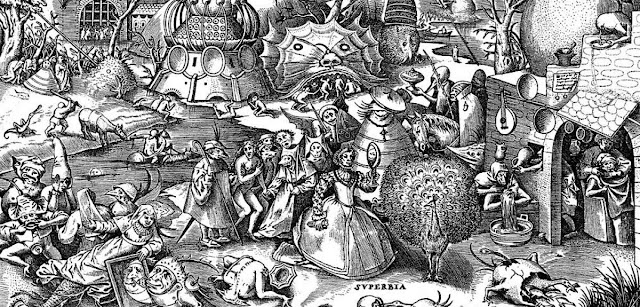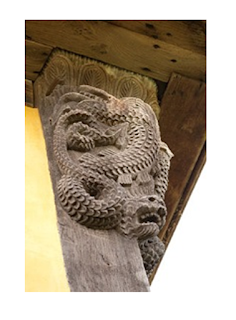Close your eyes. Imagine the Garden of Eden. Eve is being tempted by a snake coiled about the Tree of Knowledge, beguiling her to eat the forbidden fruit.
Terrible things are about to happen, but right now it’s just Eve and the snake.
What does the snake look like?
Are you picturing a little green garter snake? A giant boa constrictor?
What if I told you that the Bible is describing something much larger and much more terrifying than any of these?
What if I told you that the “cunning serpent” of Genesis isn’t a snake at all?
I have previously written about the Forbidden Fruit not being an apple. Now, read why the serpent of Genesis is not a little green garter snake.
Are You Being Attacked by the Serpent? Here are some Books on Spiritual Combat
Critically-Flawed Understandings of the Serpent in the Bible
Some people actually argue that the serpent of Eden was not Satan. Take this article from The Huffington Post, for example. In it, a professor from Berkeley – God help us – argues that the conception of Satan was greatly enlarged just prior to the writing of the New Testament. The New Testament authors just rewrote Satan into the Genesis account
What’s being implied here? Satan and the Fall of the Angels was just a fabrication, a fiction, and a recent one at that. Ultimately, it’s an attempt to undermine the importance and validity of Scripture.
Think that’s bad? Though possibly the least likely place to find truth online, The Huffington Post is not alone in attempting to re-write the Bible and, specifically, the Book of Genesis.
The Fable Explanation of the Serpent in the Bible
Other scholars have explained Genesis as merely a fable used to explain why women are afraid of snakes. At the very least, this interpretation is demeaning to women and misogynistic.
This isn’t the only problem with the snake fable interpretation:
First, and perhaps worst of all, the women-being-afraid-of-snakes theory contradicts the text of Genesis itself. Eve is not afraid of the snake. She’s chatting it up with him.
Also, in Genesis 3:15, a woman is prophesied to crush the serpent’s head (for more on Genesis 3:15, the Protoevangelium, click here). That snake should be afraid of women, not the other way around!
Second, the genre of Genesis is not fable.
Talking animals may be a traditional characteristic of fables, such as the tortoise and the hare of Aesop’s Fables, but there’s a problem. Fables are fiction. Genesis, Adam, and Eve are not fiction. Genesis may not read like a modern-day history textbook, but that doesn’t mean it doesn’t bear historical truth.
What Are We to Believe? Who is the Serpent in the Bible?
Was it not Satan that slithered into the Garden of Eden as a serpent?
Could it possibly be true that Satan wasn’t always part of the story?
How do we answer these questions? Let’s go first to the text itself and see what Scripture actually says. This would be the obvious step, right?
What Word is Used for “Serpent” in the Bible?
What is the Hebrew word used in Scripture for “snake” or “serpent”? If you want to get to the bottom of a question in Scripture, always look to the original language.
The word in Hebrew is nahash. Nahash is basically an onomatopoeia. It describes the hissing sound a snake makes … or other, snake-like monsters make. This second understanding of nahash is brought out by one of its Hebrew synonyms: leviathan. [This meaning of nahash is confirmed later in Scripture, but we’ll get to that in a minute]
Leviathan has come to be associated with all manner of massive sea monsters in mythologies from around the world:
- The Midgard Serpent or Jörmungandr of Norse mythology; the Christ-Thor parallels with the Midgard Serpent are really interesting, btw;
- The Kraken, also of Norse myth, based on the Giant Squid, featured in both Clash of the Titans and Pirates of the Caribbean;
- The sea monster Lôtān of Babylonian mythology, Lotan was a servant of the sea god Yammu and was defeated by Hadad in the Baal Cycle of myths; and
- Its colossal size even inspired Thomas Hobbes to title his seminal work on the economy after it.
Leviathan & the Book of Job
The Book of Job, too, has quite a lot to say about Nahash-Leviathan. There is a lengthy description of Levi’athan in Job 41 – here are some of the highlights:
or press down his tongue with a cord?
Can you put a rope in his nose,
or pierce his jaw with a hook?
Will he make many supplications to you?
Will he speak to you soft words?
Will he make a covenant with you
to take him for your servant for ever? …
He beholds everything that is high;
he is king over all the sons of pride.” [41:1-4,34]
This part about the covenant is very interesting. Remember the Huffington Post theory (above) that Satan was shoe-horned into the Genesis narrative thousands of years after it was written?
When Adam and Eve sinned by eating the Forbidden Fruit, they broke their covenant with God. Worse than that, in breaking their covenant with God, they formed a covenant with the Leviathan-serpent, i.e. Satan.
Sidenote: The covenant between Adam & Eve and Satan was ratified by an act of eating, i.e. the eating of the Forbidden Fruit. I wonder what we will eat to remake our covenant with God? Cf. John 6:53.
The covenant between Adam, Eve, and the Leviathan-serpent is referenced in this line from Job. Not just Adam and Eve, though. All those who break covenant with God make covenant with “the king over all the sons of pride.” In Hebrew, he is called “the Adversary” or Satan.
 |
| Where’s Waldo – This is the Seven Deadly Sins by Peter Brueghel the Elder – can you find PRIDE? |
Humans cannot make covenant with a mere animal. The Leviathan-Serpent in the Bible is not, therefore, a mere animal. It’s not a what, it’s a WHO. It’s the One who is the Lord of all Covenant-breakers, all sinners. He is the One who Christ must defeat to break the power of sin: Satan.
The Leviathan–Nahash-Serpent, therefore, is Satan. Also, Satan is consistently portrayed as Leviathan–Nahash throughout Scripture. The earliest date for the writing of the Book of Job is still several hundred years before these Satan add-ins were supposed to have occurred.
So is the Serpent in the Bible Just a BIG Serpent? Or Something Else?
or his mighty strength, or his goodly frame.
Who can strip off his outer garment?
Who can penetrate his double coat of mail?
Who can open the doors of his face?
Round about his teeth is terror.
His back is made of rows of shields,
shut up closely as with a seal.
One is so near to another
that no air can come between them.
They are joined one to another;
they clasp each other and cannot be separated.
His sneezings flash forth light,
and his eyes are like the eyelids of the dawn.
Out of his mouth go flaming torches;
sparks of fire leap forth.
Out of his nostrils comes forth smoke,
as from a boiling pot and burning rushes.
His breath kindles coals,
and a flame comes forth from his mouth.” (Job 41:12-21)
What kind of creature is Leviathan-Nahash really? Smoke rises from his nostrils and flames shoot from his mouth? What is being described here?
Still not sure? Here’s some more verses from the Book of Job. J. R. R. Tolkien could have written these himself to describe the beast that lived in the Lonely Mountain.
When he raises himself up the mighty [or the “gods”] are afraid;
at the crashing they are beside themselves.
Though the sword reaches him, it does not avail;
nor the spear, the dart, or the javelin.
He counts iron as straw,
and bronze as rotten wood.
The arrow cannot make him flee;
for him slingstones are turned to stubble.
Clubs are counted as stubble;
he laughs at the rattle of javelins. (Job 41:25-29)
Has it become obvious? What kind of creature breathes fire and is pursued by swords and spears?
A DRAGON!
A mere serpent does not “raise himself up,” because it has neither arms nor legs. Does that remind you of something back in Genesis?
Is The Serpent a Dragon in Genesis, Too?
To answer this question, you need only ask yourself this: What is God’s curse on the serpent in the Bible?
Here’s Genesis 3:14, in which God curses the Serpent (Hb. nahash; Gk. leviathan):
Because you have done this,
cursed are you above all cattle,
and above all wild animals;
upon your belly you shall go,
and dust you shall eat
all the days of your life.
What is the meaning of cursing a serpent to crawl on its “belly”? A serpent already crawls on its belly. That’s like cursing Adam to walk on two legs. It’s an empty curse.
But God’s curses are not empty. Just ask any woman who has ever given birth!
Therefore, prior to this curse, the serpent was NOT crawling on its belly. This means the serpent had arms and legs.
What do you call a serpent with arms and legs?? A DRAGON!
The Dragon of Revelation 12
Need more Scriptural proof that the silly, talking snake from Genesis was actually Satan in the form of a giant, terrifying dragon? No problem!
There is a chapter in Revelation that is the sister chapter to Genesis 3 and the Proto-evangelium. Revelation 12 refers back to the “Woman” prophesied in Genesis 3:15 who will be the enemy of Satan, i.e. not in covenant with Satan:
Ladies and gentlemen of the jury … what do you say?
Could it be any clearer that the “ancient serpent” of Eden was Satan, himself?
Not only that, Satan and the Fallen Angels are referred to as “the dragon and his angels.”
So What Do We About Dragons … Men?
So there was no ordinary, garden variety snake in Eden, but a fire-breathing dragon. This revelation may leave you with many other questions.
It leaves me with one main question: What was Adam doing? When a dragon is threatening your Princess, your Eve, what’s a Man supposed to do? SLAY THE DRAGON. You slay the dragon. What was Adam doing?
Adam had been charged by God to till/cultivate (Hb. abodah) and to keep/guard (Hb. shamar) the Garden and everything and everyone in it, cf. Genesis 2:15, Numbers 3:7-8 (priests and the Tabernacle). Adam completely failed at this.
There is a great lesson here for all men. When the dragon comes near your wife or any woman, for that matter, you kill it. It’s what we WERE MADE FOR.
Conclusion: Is “Serpent” Mistranslated?
Is “serpent” a possible translation of nahash? Yes, of course, it is. But it would be like translating> Adam as merely “Man” or, worse yet, just “One.” This is sometimes done to make Genesis seem less gender-specific. Gross.
While translating Adam as just “Man” or “One” may be technically correct, it’s not very specific. Translations which are oversimplifying or overgeneralizing can even lead to a watering down of the Truth of Scripture.
Theological truths can be hidden in this way. Translating Adam as just “Man” or “One” is a great way to hide the amazing truths of the Theology of the Body and male-female complementarity.
Likewise, translating nahash as just “serpent” or “snake” disguises the terrifying reality of Sin and Satan. This is like living in a place where lions roam and teaching your children that “lions” are merely “cats,” like Fluffy here:
Further, translating nahash as just “serpent” or “snake” deprives us of the cosmic drama unfolding during the Fall. Adam should have slayed the Dragon!
The “snake” translation deprives us, therefore, of an essential aspect of Christ’s sacrifice and victory on the Cross. Jesus slays Satan with the Cross, the sword-shaped Cross. Jesus slays the Dragon that Adam failed to fight.
Adam & the Dragon is the ORIGIN of the Dragon Archetype. This is why knights slaying dragons became a motif in the story-telling of the entire the world and throughout all history and pre-history.
For more on the importance of archetypes, especially with regard to our moral and intellectual formation, check out this great book by Michael O’Brien, A Landscape with Dragons:

















